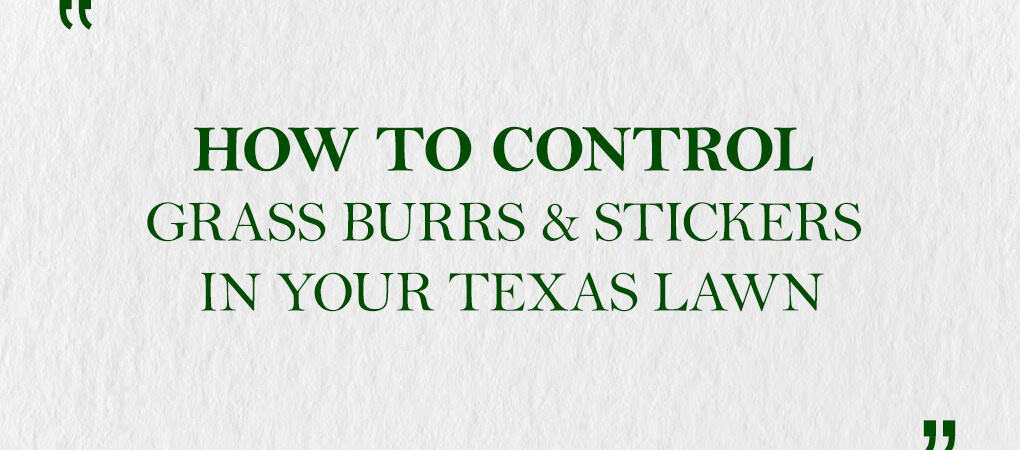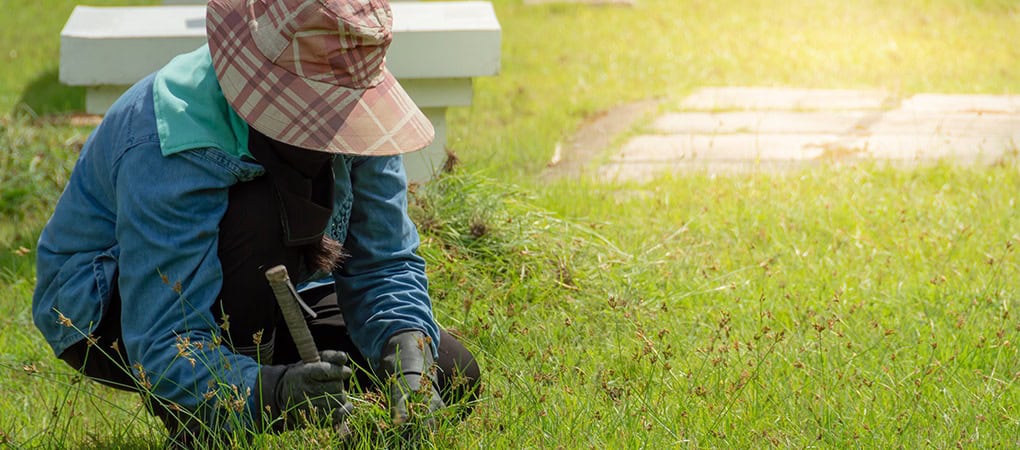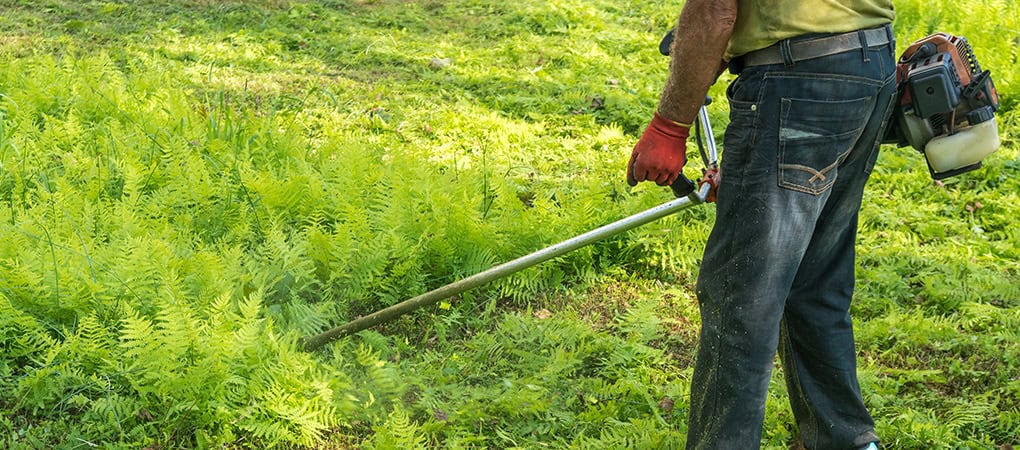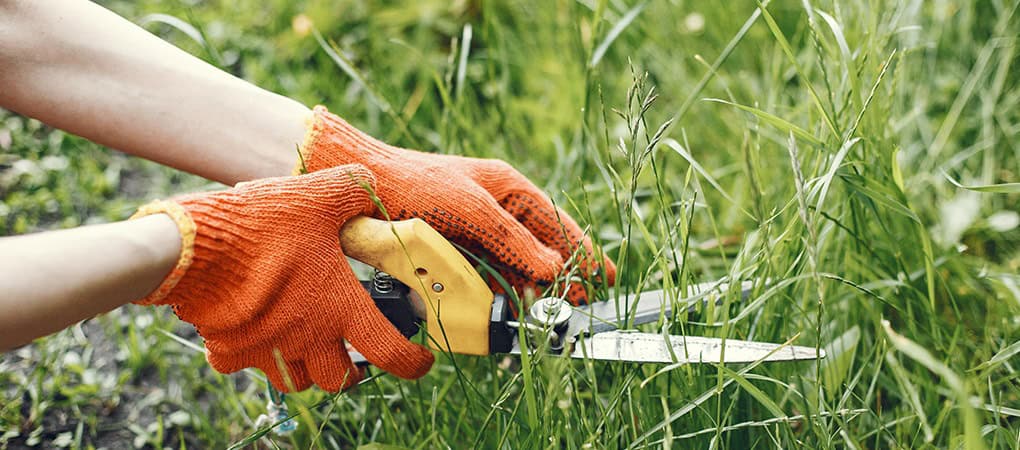There’s nothing more fun than sitting in your yard on a hot Texas day until you step on a grass burr and feel a sharp sting shoot up your foot. If you’ve ever had the unfortunate experience of stepping on one, you know just how irritating these little nuisances can be. Grass burrs, also known as stickers or sandspurs, seem to pop up out of nowhere and instantly turn your lush, green lawn into a prickly nightmare.
These spiny seed pods are more than just painful; they spread fast, latch onto clothes, pets, shoes, and even your lawn equipment, quickly invading every corner of your yard. The good news? You can get rid of them. And once you do, you can reclaim the soft, sticker-free lawn you’ve been dreaming of.
In this guide, we’ll walk you through everything you need to know to eliminate grass burrs and stickers from your Texas lawn from identifying them and removing them manually, to using herbicides and preventive treatments.
What are Grass Burrs & Stickers?

Grass burrs (also called sandburs or stickers) are the seed pods of a type of weedy grass that thrives in hot, dry climates making Texas the perfect home. These seed pods are covered in sharp, barbed spines that help them cling to anything they touch. While they may appear harmless when young, they mature into hard, spiny balls that make walking barefoot across your yard feel like crossing a bed of nails.
These burrs aren’t just painful; they’re persistent. They spread by sticking to your shoes, pets, clothing, or even your lawn mower, making it incredibly easy for them to colonize new areas of your yard or your neighbors’ yards.
How to Get Rid of Grass Burrs in Your Lawn
Grass burrs can turn your relaxing backyard into a landmine of pain. But don’t worry, there are tried-and-true methods to remove them and prevent them from coming back.
Manual Removal Techniques
If you’re dealing with a small infestation or you’re trying to minimize chemical use, manual removal is a great first step. Here’s how to do it effectively:
- Wear gloves. Those spikes are sharp!
- Pull weeds from the root. Grasp the burr-producing plant near the base and pull it up gently but firmly. Leaving the root behind means it’ll regrow.
- Use weeding tools. For larger patches, a hoe or weeding fork can make the job easier and more thorough.
- Dispose of burrs properly. Bag them immediately to prevent seed spread.
- Mow at a higher setting. Keeping your lawn around 3 inches tall shades the soil and discourages burrs from getting enough sunlight to grow.
- Regular landscape maintenance plays a key role in preventing the conditions that allow burrs to thrive.
Using Herbicides to Eliminate Grass Burrs
Sometimes, pulling them out just isn’t enough, especially if the infestation is widespread. That’s when herbicides can help.
Pre-Emergent Herbicides
These stop the burrs before they even grow. Apply pre-emergent herbicides in early spring, when the soil temperature is around 52°F. Products with active ingredients like Pendimethalin or Benefit work well.
- Make sure to water your lawn lightly after application to activate the herbicide.
- Don’t use it if you’re planning to seed your lawn, pre-emergent block all seeds from germinating.
Post-Emergent Herbicides
For burrs that have already sprouted, post-emergent herbicides are the answer. Look for products labeled for grassy weeds and stickers. Apply during warm, dry weather when the burrs are actively growing for the best results.
- Follow label instructions exactly to avoid damaging your grass.
- Soft-spray if possible to avoid over-application.
A consistent irrigation schedule, like those used in water conservation systems, helps maintain a healthy, dense lawn, which makes it harder for burrs to take root. Watering deeply, not frequently, encourages strong grass growth and keeps your lawn resilient against weeds.
How to Prevent Grass Burrs & Stickers in Texas

Prevention is always easier than removal. Once you’ve cleared the burrs, the key is to keep them from coming back.
Lawn Care Best Practices
A healthy, dense lawn is your first line of defense. Weeds, including burrs, have a harder time taking root when grass is thick and thriving.
1. Mow Properly
- Keep your grass at least 3 inches tall to shade out burrs.
- Avoid scalping your lawn, which creates open soil where burrs can thrive.
2. Water Deeply, Not Frequently
- Aim for 1 to 1.5 inches of water per week.
- Water early in the morning to reduce evaporation and fungal issues.
3. Aerate the Soil
- Aeration loosens compacted soil, helping roots grow deeper and stronger.
- Do this in the fall or spring to maximize effectiveness.
4. Overseed Your Lawn
- Fill in thin or bare patches with quality grass seed suited for Texas climates.
- Thick grass = less room for burrs.
Healthy turf often starts with thoughtful landscape design and smart landscape installation, both of which influence soil condition and weed resistance.
Top Lawn Treatments to Prevent Burrs and Stickers

In addition to regular lawn care, a few targeted treatments can keep burrs at bay.
Pre-Emergent Herbicides
- Apply in early spring and again in late summer if needed.
- Use a broadcast spreader for even applications.
Post-Emergent Herbicides
- Best used when burrs are visible.
- Apply on calm days to avoid herbicide drift onto wanted plants.
Fertilization
- Feed your lawn twice a year, in spring and fall.
- Choose a balanced fertilizer like 16-4-8 or one made for your specific grass type.
- Avoid over-fertilizing, which can stress your lawn and promote weed growth.
Mulching & Edging
- Add mulch around flower beds and trees to block burrs from spreading.
- Keep sharp edges around your lawn to create a clear border.
Don’t Let the Weeds Win: A Preventive Strategy
Let’s face it, no one likes dealing with weeds. After spending hours mowing, watering, and fertilizing, it’s disheartening to see your yard taken over by prickly invaders. And once they’re in, they don’t leave without a fight.
But here’s a secret: you can stop them before they show up.
Why Prevention Works
Trying to remove grass burrs after they appear is like trying to fix a leak with a bucket instead of repairing the roof. You’re always a step behind, and the problem keeps returning.
Now imagine your lawn: lush, green, dense. No burrs in sight. That’s the power of prevention. By keeping your lawn healthy and using pre-emergent herbicides, you’ll block weeds from ever getting a foothold.
You’ll save time, save money, and save yourself a lot of frustration (and foot pain). So don’t wait until it’s too late, start a preventive lawn care routine and stop burrs before they start.
And when seasons change, don’t forget that those transitions are easier when your outdoor spaces are thoughtfully updated. Holiday decorating can bring year-round charm that complements a well-maintained yard
Additional Tips for Getting Rid of Stickers in Your Yard

Still finding a few stragglers after all that work? Here are a few bonus tips to keep your yard 100% burr-free:
- Use a rake or burr-removal roller to collect any loose stickers.
- Wash pets regularly if they’ve been running through sticker-infested areas.
- Check and clean your mower blades and shoes after working in affected areas to avoid spreading seeds.
- Avoid composting pulled burrs, the seeds might survive and spread when you reuse the compost.
Final Thoughts
Grass burrs and stickers are a common problem in Texas lawns, but they don’t have to be a permanent one. With the right combination of manual removal, herbicide treatment, and preventive care, you can eliminate them for good and enjoy a lush, barefoot-friendly yard once again.
Stick to the plan, stay consistent, and don’t let the stickers win!

